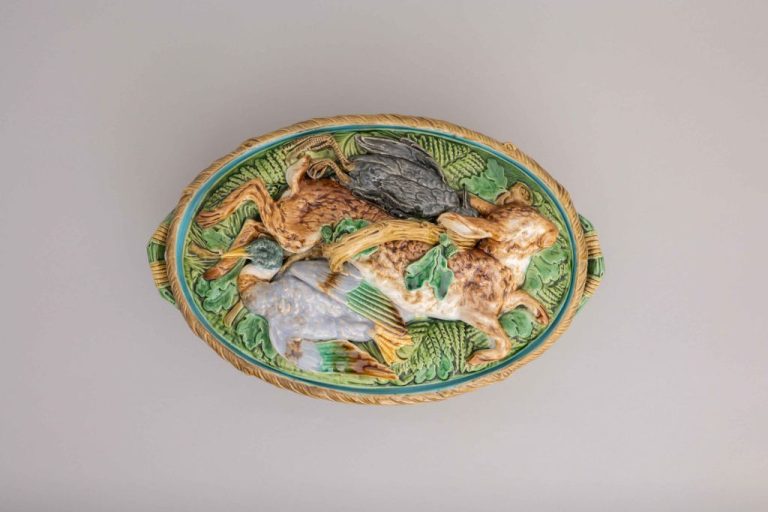How Old Is Bolesławiec Pottery?
Introducing Bolesławiec Pottery
Bolesławiec pottery refers to the distinctive ceramic tableware and decorative items that have been produced in the Polish town of Bolesławiec for over 300 years. Located in the Lower Silesian region of southwestern Poland near the German border, Bolesławiec has a long tradition of pottery making dating back to the Middle Ages.
Visually, Bolesławiec pottery is most easily recognized by its elaborate, colorful floral patterns and designs. The patterns typically feature bright, vivid colors like cobalt blue, grass green, golden yellow, and terra cotta red.motifs include highly stylized flowers, fruits, leaves, vines, and birds. The fluid, swirling style of the decoration has a lively, folk art feel.
In addition to the distinctive decorations, Bolesławiec wares often have a lustrous, glossy white background glaze. Many pieces also incorporate molded ornamentation and relief details as part of their decoration. From mugs and plates to vases, centerpieces, and figurines, the eye-catching beauty of Bolesławiec pottery has made it popular worldwide.
Origins & Early History
The roots of Bolesławiec pottery can be traced back to the 16th century in the Lower Silesian town of Bolesławiec, located in southwestern Poland near the German and Czech borders. Pottery production emerged at this time to take advantage of the region’s natural clay deposits.
The earliest Bolesławiec potters fashioned simple functional pieces like jugs, bowls, and plates using hand-crafted techniques. Glazes were basic at first, limited to browns, greens, yellows, and blues. Decorations included engraved floral patterns and geometric designs. Pottery was an important cottage industry and wares were sold locally as well as traded and transported along trade routes to Germany, Bohemia, Prussia, and beyond.
In the 17th century, influential ceramic artisans like Christian Dittrich began elevating the quality and artistry of Bolesławiec pottery using lathe turned vessels, tin-glazing, and blue painted decoration influenced by Dutch Delft ceramics. Workshops sprung up around the town square and production grew steadily to meet demand.
Pottery in the 18th Century
The 18th century marked an important period in the development of Bolesławiec pottery. As demand for pottery grew both domestically and abroad, potteries began experimenting with new styles and techniques.
The potteries of Christian Gottlieb Schreiber and Martin Miedziak were among the most prominent and influential during this time. Located in the Bolesławiec region, these potteries started producing high-quality stoneware using local clay deposits. They became known for their finely crafted tableware and figures.
Decorative techniques became more sophisticated in the 18th century. Potteries used blue underglaze decoration featuring floral patterns,branches, leaves, and Oriental motifs. The cobalt dye used to create the signature “Bolesławiec blue” originated from Saxony’s chemical factories. Potteries also started applying overglaze enamel painting for more colorful designs.
In addition to tableware like platters, mugs, and jugs, potteries made functional items such as apothecary jars, stove tiles, and devotional figures. The renowned Bolesławiec nativity scene tradition began during this period as well. By the end of the 18th century, Bolesławiec had become an established pottery center both regionally and abroad.
19th Century Growth
The 19th century marked a period of tremendous growth and innovation for Bolesławiec pottery. As the Industrial Revolution swept across Europe, production capacity increased dramatically with the introduction of new technologies. By the mid-1800s, over 20 workshops and factories were operating in the Bolesławiec region.
The growing scale of operations enabled exponential increases in exports. Bolesławiec pottery was shipped across Europe and as far as the Americas. Improved transportation networks by rail and sea fueled the expanding trade.
Many new kilns were constructed during this time, allowing larger volumes to be fired simultaneously. Kilns were made taller to accommodate bigger loads, and their heat efficiency was enhanced. These upgrades supported the booming production.
Stylistically, Bolesławiec pottery absorbed influences from Art Nouveau and other popular trends of the era. Decorative elements became more elaborate and detailed. In addition to traditional flower and leaf motifs, pieces depicted pastoral country scenes and geometric patterns. Experimentation with new shapes and vivid glazes also emerged as potters innovated within their craft.
By the late 1800s, Bolesławiec had firmly established itself as a center of ceramic excellence. The proliferating workshops and evolving styles laid the foundation for continued success in the 20th century.
Changes in the Early 20th Century
The early 20th century brought enormous changes for the Bolesławiec pottery industry. Two world wars and shifting political boundaries took a heavy toll on the traditional pottery studios. Many historic workshops were destroyed or forced to close down during this turbulent time.
The traditional styles and techniques of Bolesławiec pottery were also in decline in the early 1900s. As tastes changed, the delicate painted floral patterns fell out of fashion. Potters experimented with Art Deco and modernist designs, moving away from the region’s folkloric styles. However, the disruption of the wars made it difficult to sustain these innovations.
The ownership and management of the potteries underwent significant changes as well. With the previous family-run studios struggling to survive, many were consolidated into larger collectivized factories under communist central planning. This allowed production to continue through standardization and mass production, but at the expense of the artisanal traditions.
Post-War Years
After World War II, Poland fell under communist control and the pottery industry was nationalized. The Bolesławiec Pottery Works came under state control.
The communist authorities focused production on folk styles and decorative pottery for export. Traditional folk patterns and floral motifs were popular designs during this era.
Exports of Bolesławiec pottery grew steadily in the post-war years, with the ceramic ware reaching markets in Europe, North America, and Australia. The increased export demand led to expansion of manufacturing capacities in Bolesławiec.
While nationalization brought increased state control, the distinctive styling and high quality of Bolesławiec pottery was maintained even throughout the communist period.
Contemporary Bolesławiec Pottery
In the 1990s after the fall of communism, the state-owned Bolesławiec pottery factories were privatized. This led to a revitalization of the pottery industry in the region. While some factories closed down, many others modernized equipment and streamlined production. New private companies also opened up, creating a resurgence in the renown Bolesławiec pottery.
Today, Bolesławiec pottery is popular among collectors and decorative arts enthusiasts around the world. The distinctive folk style pottery with rich colors and hand-painted floral and geometric motifs is highly sought after. Limited edition pieces can fetch high prices at auction. Tableware, vases, candle holders, and decorative figures remain staple products of the Bolesławiec factories and artisans.
While staying true to its long-standing traditions, Bolesławiec pottery continues to evolve with new glazes, forms, and decorative designs. The future remains bright for this iconic Polish ceramic ware with its deep historical roots and timeless allure.
Characteristics & Styles
Bolesławiec pottery is known for its distinctive clay, colors, and glazes. The clay contains high amounts of quartz, giving it a grainy texture. The pottery uses lead-free glazes made from locally-sourced ingredients like feldspar, kaolin, quartz, and zinc oxide. This produces rich, varied colors like cobalt blue, olive green, yellow, and brown. Traditional styles feature earthy, rustic colors while contemporary pieces use brighter, bolder hues.
There are several classic Bolesławiec patterns and motifs. Folkloric floral designs like cornflowers, roses, and carnations are prevalent. Geometric shapes, dots, stripes, and squiggly lines also decorate traditional pieces. Concentric circles and swirl patterns are other common elements. Contemporary Bolesławiec incorporates modern motifs like abstract shapes and asymmetrical designs, though still grounded in tradition.
Traditional styles showcase intricate hand-painted detail, often with floral motifs along the edges and geometric patterns on main surfaces. Relief molding and embossed textures add dimension. Contemporary pieces blend modern simplicity with traditional roots. Stylized florals, bold colors, and clean lines give a current look. While styles vary, the handmade quality and connection to tradition remain constants for Bolesławiec pottery through the ages.
Manufacturing Process
Bolesławiec pottery is known for its distinctive manufacturing process, which has evolved over centuries while retaining many traditional elements. The process starts with the preparation of the clay, which comes from local deposits around Bolesławiec. The clay is weathered and purified before being mixed with quartz, feldspar, and kaolin. This gives the clay high plasticity, texture, and durability.
The pottery is formed using techniques like throwing, press molding, and hand sculpting. Complex pieces may combine multiple techniques. The pottery is then dried slowly to avoid cracking before the first firing, known as the bisque firing. This firing hardens the clay at around 1,800°F.
After the bisque firing, the pottery is decorated using traditional techniques. Colorful glazes are applied by brushing, dipping, or pouring. Detailed designs are hand-painted using ceramic paints. The patterns exhibit the strong floral motifs of the region. Finally, the pottery undergoes a glost firing around 2,200°F to fuse the glazes and complete the hardening process.
The unique clay and traditional manufacturing methods give Bolesławiec pottery its distinctive look and feel. Each piece goes through weeks of careful work from start to finish. The results are durable, high-quality ceramics with the brilliant colors and floral designs Bolesławiec is renowned for.
The Future of Bolesławiec Pottery
Bolesławiec pottery has a long and storied history, but what does the future hold for this traditional Polish craft? While the 21st century brings both challenges and opportunities, the outlook is cautiously optimistic.
One major challenge is preserving the deep-rooted traditions and techniques of Bolesławiec in an increasingly high-tech world. Each piece of renowned Bolesławiec pottery still goes through a complex multi-step process involving hand-decoration. Maintaining this legacy while updating some aspects of production will be crucial for sustaining the quality and appeal of Bolesławiec ceramics.
At the same time, the possibilities of modern technology and global connectivity can also be harnessed to the advantage of Bolesławiec pottery. Online retail and international shipping open up global niche markets to smaller Polish producers that previously struggled with wider distribution. New generations of Bolesławiec artisans can also bring fresh perspectives to balance tradition and innovation.
Most importantly, Bolesławiec must continue capturing the imaginations of pottery aficionados worldwide. From quirky animal figurines to ornate decorative wares, the diverse Bolesławiec stylistic repertoire has enchanted collectors for centuries. Maintaining this intrigue and cultivating new generations of fans will ensure future success.
With concerted effort by potters to preserve core traditions while adapting intelligently to modern tastes and technologies, the one-of-a-kind ceramic artistry of Bolesławiec is well-positioned to remain a thriving and evolving craft for years to come.


